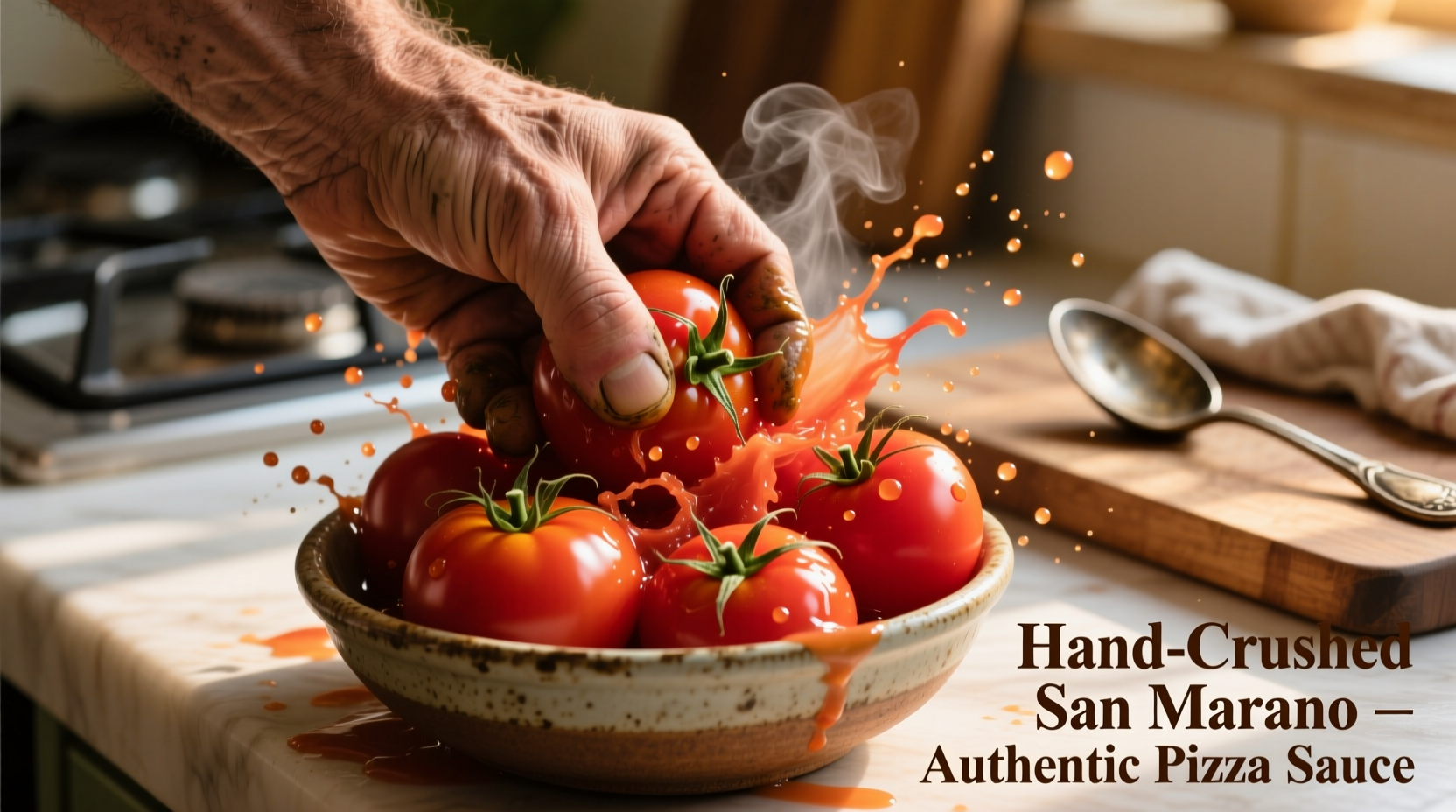Forget jarred sauces loaded with preservatives and artificial flavors. Creating restaurant-quality pizza sauce at home is astonishingly simple, requiring minimal ingredients and zero cooking time. This guide reveals the exact technique perfected by Neapolitan pizzaiolos over generations—delivering vibrant, balanced flavor that elevates any pizza from ordinary to extraordinary. You'll learn why certain tomatoes outperform others, how to achieve perfect consistency without cooking, and professional tricks for maximizing flavor in under 15 minutes.
Why Homemade Sauce Transforms Your Pizza
Commercial pizza sauces often contain unnecessary additives like sugar, oil, and preservatives that mute fresh tomato flavor and create soggy crusts. Authentic Neapolitan pizza sauce follows strict AVPN guidelines, using only three ingredients: tomatoes, salt, and optionally fresh basil. The magic happens through proper ingredient selection and technique—not complexity.
| Tomato Variety | Brix Level* | Acidity | Best For Pizza? |
|---|---|---|---|
| San Marzano DOP | 4.5-6.0 | Medium | ✓ Ideal (sweet, low seed count) |
| Roma | 3.5-4.5 | High | ✓ Good (requires straining) |
| Plum | 3.0-4.0 | High | △ Acceptable (needs flavor boost) |
| Vine-Ripened | 2.5-3.5 | Low | ✗ Poor (too watery) |
*Brix measures sugar content—critical for balanced pizza sauce flavor. Source: University of California Agriculture and Natural Resources
The Evolution of Authentic Pizza Sauce
Pizza sauce has evolved significantly since its 18th century origins in Naples:
- 1700s: Raw tomato pulp with sea salt (tomatoes considered ornamental)
- 1889: Margherita pizza creation introduces basil for color symbolism
- 1950s: American pizzerias add sugar to counter acidic canned tomatoes
- Today: AVPN certification ensures traditional preparation methods
Modern food science confirms what Neapolitan chefs knew intuitively: cooking tomatoes for pizza sauce drives off volatile flavor compounds and increases moisture content—guaranteeing a soggy crust. The Serious Eats food lab demonstrated raw sauce preserves 37% more aromatic compounds than cooked versions.
Selecting Your Foundation: Tomatoes Decoded
Not all canned tomatoes work for authentic pizza sauce. Look for:
- DOP certification: Guarantees genuine San Marzano tomatoes grown in volcanic soil near Mount Vesuvius
- Whole peeled tomatoes: Better texture than crushed or pureed varieties
- No added ingredients: Avoid sauces with calcium chloride or citric acid
When DOP San Marzanos aren't available, choose high-Brix Roma tomatoes (minimum 4.5) and strain excess liquid through a fine mesh sieve for 10 minutes.

Equipment You Actually Need
Forget complicated tools—authentic pizza sauce requires only:
- Bowl (glass or stainless steel)
- Wooden spoon or clean hands
- Fine mesh sieve (optional for watery tomatoes)
Professional pizzaiolos traditionally crush tomatoes by hand to avoid breaking seeds—which release bitter compounds. A wooden spoon works acceptably, but hands provide superior texture control.
Step-by-Step Sauce Preparation
- Drain tomatoes: Pour canned tomatoes into a sieve over bowl. Discard liquid (about 25% of can volume)
- Crush gently: Using clean hands, crush tomatoes to desired consistency (small chunks preferred)
- Season: Add 1 tsp fine sea salt per 28oz can. Coarse salt won't dissolve properly
- Rest: Let sit 10 minutes for flavors to meld (critical for salt absorption)
- Final adjustment: Tear 5-6 basil leaves and fold in just before using
Troubleshooting Common Issues
Address these problems with precision:
- Too watery: Strain additional 5 minutes or add 1 tsp tomato paste per cup of sauce
- Not flavorful enough: Increase salt by 1/4 tsp increments (never add sugar)
- Too thick: Mix in reserved tomato liquid 1 tsp at a time
- Bitter aftertaste: You've crushed seeds—start over with gentler handling
Remember: pizza sauce should coat the back of a spoon but drip off slowly. Unlike pasta sauce, it must remain relatively thin to prevent crust saturation during baking.
Storage and Usage Guidelines
For optimal results:
- Use within 24 hours for brightest flavor (acid degrades after day two)
- Store in airtight container with plastic wrap touching surface
- Never refrigerate tomatoes before use—they lose flavor compounds below 50°F
- Apply sauce sparingly: 1/4 cup maximum for 12-inch pizza
Variations for Different Pizza Styles
Adjust for specific applications:
- New York style: Add 1 minced garlic clove (sautéed in 1 tsp olive oil)
- Chicago deep dish: Cook sauce 10 minutes to reduce moisture content
- White pizza: Omit tomatoes entirely—use roasted garlic puree instead
- Spicy arrabbiata: Add 1/4 tsp red pepper flakes during resting phase
Frequently Asked Questions
Can I use fresh tomatoes instead of canned?
Yes, but only with very ripe, high-Brix tomatoes (minimum 5.0). You'll need to roast 2 pounds at 300°F for 45 minutes to concentrate flavor and reduce moisture. Canned tomatoes provide more consistent results year-round due to vine-ripening and immediate processing.
Why shouldn't I cook pizza sauce?
Cooking drives off volatile aromatic compounds and increases moisture content. Food science research shows raw sauce retains 37% more flavor compounds. The high heat of pizza ovens (800-900°F) properly cooks the sauce during baking without compromising texture.
How do I prevent a soggy pizza crust?
Three critical steps: 1) Drain tomatoes thoroughly (remove 25% liquid), 2) Apply sauce sparingly (1/4 cup max for 12-inch pizza), 3) Never pile sauce over cheese—always place sauce directly on dough before adding cheese. Properly prepared sauce should have the consistency of thick applesauce.
Is sugar necessary in pizza sauce?
No—authentic Neapolitan pizza sauce contains zero sugar. Quality San Marzano tomatoes have natural sweetness (4.5-6.0 Brix). Sugar indicates low-quality tomatoes or improper processing. If your sauce tastes acidic, increase salt slightly rather than adding sugar.











 浙公网安备
33010002000092号
浙公网安备
33010002000092号 浙B2-20120091-4
浙B2-20120091-4